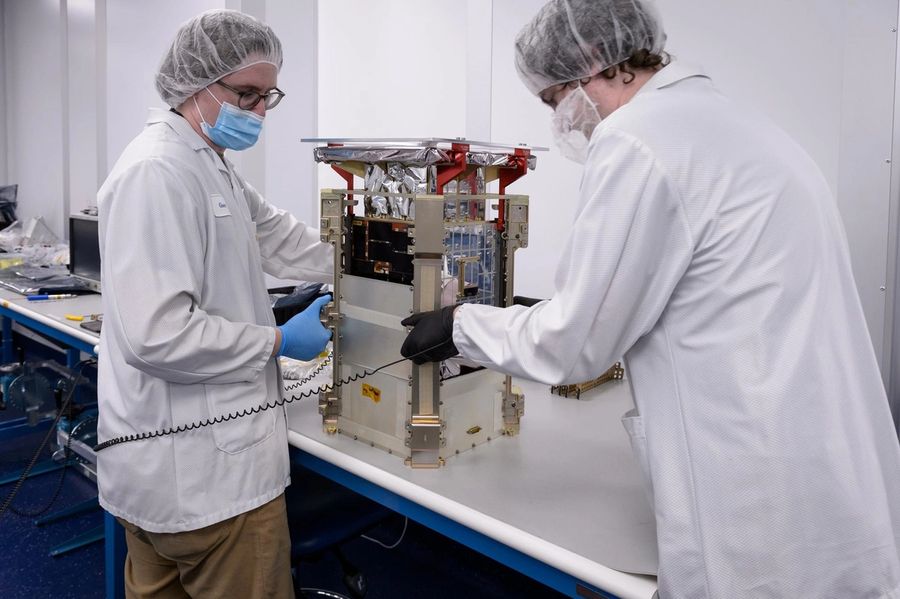Jordan McDonald

NASA is channeling its inner Hollywood exec and embracing the reboot. Now that private companies have mastered the, uh, “easy” parts of space (see: getting there), the legendary US space agency has set its sights on going to the moon…again.
The space agency’s next big project is a series of moon missions, dubbed Artemis, culminating in a manned journey to the moon by 2025.
But before it can hurl its next trailblazing astronauts to the moon, it needs to test out the route to get there, as well as the lunar orbit the astronauts will use above it. Enter the Cislunar Autonomous Positioning System Technology Operations and Navigation Experiment, or CAPSTONE, a 55-pound CubeSat. The satellite will test out the new route to the moon and subsequent lunar orbit ahead of NASA’s Gateway lunar-orbiting space station, a forward operating base for the upcoming Artemis moon missions. CAPSTONE is scheduled to launch from New Zealand on or after May 31.
The CubeSat is the brainchild of a team of private companies, as well as NASA. Colorado-based Advanced Space is responsible for designing the software and unique trajectory that will take the CubeSat into lunar orbit, California’s Tyvak Nano-Satellite Systems and Stellar Exploration Inc. designed and built the satellite and its propulsion system, respectively, while California-based Rocket Lab is responsible for launching the satellite into low-Earth orbit (LEO) before it begins its trajectory to the moon.
NASA awarded Advanced Space a $13.7 million contract to create and operate the CAPSTONE CubeSat and ~$10 million to Rocket Lab to shuttle CAPSTONE into space.
A rendering of CAPSTONE in lunar orbit. (NASA)
Advanced Space also developed CAPS, the positioning system the CubeSat will use to pinpoint its location while in space, without the assistance of Earth-based ground stations. CAPS will be used to measure the distance between CAPSTONE and the Lunar Reconnaissance Orbiter, which has been circling the moon since 2009.
“Most spacecraft don’t know where they are. It sounds weird, but most spacecraft—they don’t have anything to do with where they are. The operators on the ground know where they are, but the satellite doesn’t know,” Bradley Cheetham, CEO and president of Advanced Space, told Emerging Tech Brew.
Cheetham said CAPSTONE will try and change that, allowing the satellite to determine its own location without exclusively relying on tracking from Earth.
“The ground will always be involved,” he added. “But the burden on them, the amount of hard work they have to do, is really what we’re trying to reduce.”
Rocket Lab’s Electron rocket, which recently made headlines after successfully testing its reusability by way of helicopter catch, will be the 27th launch of the orbital-class small rocket series. Electron will take CAPSTONE into space, before the second-stage Photon takes CAPSTONE out of LEO and into its flight path to the moon. From there, the microwave-sized satellite will use its own propulsion to get into lunar orbit.
Morgan Bailey, director of communications at Rocket Lab, said a mission like this was only possible due to the influx of private companies in space, and the shrinking size of satellites that enabled costs to go down.
“It used to take the resources of entire countries and a lot of years and enormous amounts of money to do anything in space—let alone a learning mission—but as technology has advanced and corporate organizations have been able to develop technologies, not just governments, that’s brought down the cost of access to space and, as a result, broadened the horizons of what we can achieve in orbit,” Bailey told Emerging Tech Brew.
No comments:
Post a Comment